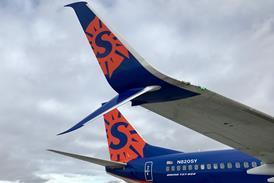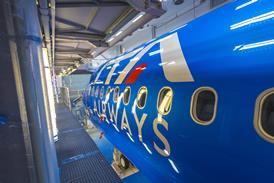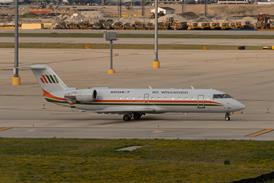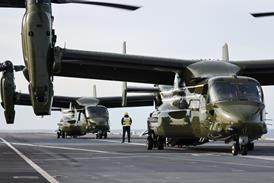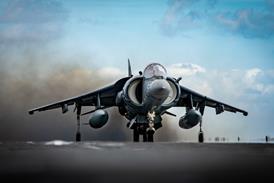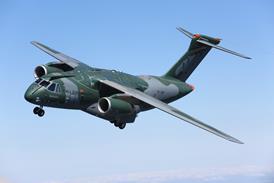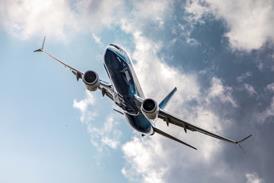CAROL SHIFIN WASHINGTON
The race to equip international passenger aircraft in-flight entertainment (IFE) systems with e-mail and Internet connectivity has begun
By far the longest stridesin the creation of Internet-capable IFE technology have been made by Seattle-based Tenzing Communications. The company is installing its system in long-haul aircraft belonging to Air Canada, Cathay Pacific and Varig Brazilian Airlines, and is awaiting installation schedules from Virgin Atlantic Airways.
But not all is going to plan. Customers Finnair, SAS and Singapore Airlines have delayed equipping their aircraft with the system in the wake of the events of 11 September. "This is not the time to go forward with things that will increase cost," says an SAS official. In addition, Singapore has suspended a trial of the system it was conducting on its Los Angeles-Tokyo-Singapore route for budgetary reasons. Only an estimated four to six passengers on each flight accessed e-mail or the Internet - though up to 24 passengers could have used it simultaneously.
Laura Alikpala, director of marketing at Tenzing, is taking the postponements in her stride. "Interconnectivity is not going away and the airlines know this," she says.
Cathay Pacific has been moving forward most aggressively. It already has six Airbus A330-300s equipped with high-speed, in-flight e-mail and Internet capability, and expects its entire fleet of long-haul aircraft to be connected by 2003. "We are convinced that e-mail and Internet will soon be an essential in-flight service, and we are proud that we are leading the way," says manager Sarah Blomfield of Cathay.
Air Canada also has been pressing forward - although recently at a slower pace - and has the system installed on five Boeing 767s which it uses on US-Canada routes and some longer-haul domestic destinations. Installation of the Tenzing system on aircraft used on transoceanic routes was originally due for completion by 2003.
Varig's new Boeing 777s are being equipped with Tenzing's product, which will be made available to passengers this quarter. They will access the service by plugging their laptops into Varig's in-flight entertainment system, the new Matsushita Avionics Systems MAS 3000. The carrier demonstrated the capability of the Tenzing system to send and receive e-mails in flight during a trip late last year between Porto Alegre and Rio de Janeiro for airline officials and journalists.
Seeking feedback
Virgin Atlantic also will be installing the Tenzing system, integrating it with the MAS 3000, which it expects to introduce early in 2002. A Virgin official says it will use the MAS3000introduction as a trial to get feedback from customers before introducing the e-mail/Internet system.
Tenzing, in which Airbus Industrie has a 30% stake and Cathay Pacific a 10% holding, laid off 80 people, around half its workforce, following carrier cuts in the wake of 11 September and the bankruptcy of key customer Swissair. But it is still the clear leader in this technology, its position further strengthened in late November when Connexion, Boeing's Internet connectivity programme, potentially a major source of competition, suffered a setback.
Boeing's joint venture with three major US airlines - American, Delta and United Airlines - collapsed when the carriers withdrew financial support for Boeing's plans to launch a broadband connectivity product to provide high-speed, two-way Internet and live television services to airliners in flight. The reason given for the pull-out was that the carriers wanted to use their resources on the more pressing problems caused by the sharp fall-off in air travel after the attacks in the USA.
The airlines were going to share in the substantial investment needed to develop the system, get regulatory approval and bring it to market, as well as in potential profits. Each carrier was to test the broadband service for six months on 10 aircraft, beginning in the second half of this year. After successful trials, the airlines would have installed the system on up to 1,500 aircraft.
The only other commercial airline customer for Connexion is Lufthansa, which still expects to begin a three-month test of the service on a Boeing 747 later this year or in early 2003.
The system is available to the US private business jet market and to government customers.
Technology differences
The changes at Connexion have cost more than 600 jobs, leaving about 100, although most employees have been transferred to other Boeing businesses.
There are substantial technology and cost differences between the Tenzing and the Connexion systems. Connexion has more functionality, but is also much more expensive - the cost per aircraft is estimated to be in the high six figures.
The Boeing system also requires aircraft to be equipped with a phased array and a transmit antenna, which is a key enabler of two-way broadband communications.
In contrast, the Tenzing narrow-band system can be deployed using a passenger aircraft's existing infrastructure. Once a server is on board the aircraft, Alikpala says, the Tenzing system can use existing telephony to create the on-board local area network and use existing radios to create the air-to-ground network. Consequently, the cost of installing a Tenzing system is only around $80,000 per aircraft.
Cathay is installing a General Dynamics high-speed data network on its aircraft enabling the carrier to provide all passengers with simultaneous access to the Tenzing system, officials say, rather than just 24.
Tenzing also has formed a number of strategic alliances and joint ventures with other companies to develop and deliver broadband services to commercial airliners.
Although some carriers have embraced the in-flight e-mail and Internet services, most have not, and no US carriers have undertaken to provide this service to its passengers. British Airways, which has been a pioneer in the provision of passenger amenities, trialled an "interactive" system in 2000, an official says, but was not satisfied with hardware availability. Nor has BA seen overwhelming demand for it, he adds.
"One thing passengers have been demanding is a power outlet for laptops, and that we have," he says. "It's in all the airplanes in first class, business class and World Traveller Plus." BA also has up-to-date in-flight entertainment systems on all its long-haul aircraft, including multi-channel IFE systems in its economy sections. Its entertainment systems in first and business classes have 18 film and video channels, and first-class seats have built-in video cassette recorders with 60 films from which to choose.
Most of the key international airlines have been installing power ports in their first- and business-class cabins. Singapore Airlines will be installing AC power outlets with Space Beds in business class. This means travellers need not carry adaptors to use an aircraft's power source.
Customer options
Singapore also is installing the MAS 3000 system, which offers passengers the chance to create their own 12-track "playlists" and a wide range of videos and music, an SIA official says. The options are of particular benefit to travellers whose flights into the Asia-Pacific region can easily total 20 hours and more, he adds.
Virgin Atlantic, the first carrier to provide individual seat-back video-screens for economy passengers, has three different entertainment systems on its aircraft. Odyssey, its most powerful, is used on most flights to North America, and offers 20 movie and television channels, 24 audio channels and 25 Nintendo games.
In general, the companies marketing IFE systems have seen a downturn in new sales, and some customers have delayed installing these systems as a cost-cutting measure. But passengers have become used to entertainment on long flights, and no one expects the drive to provide innovative new IFE systems to go away.
Source: Airline Business

